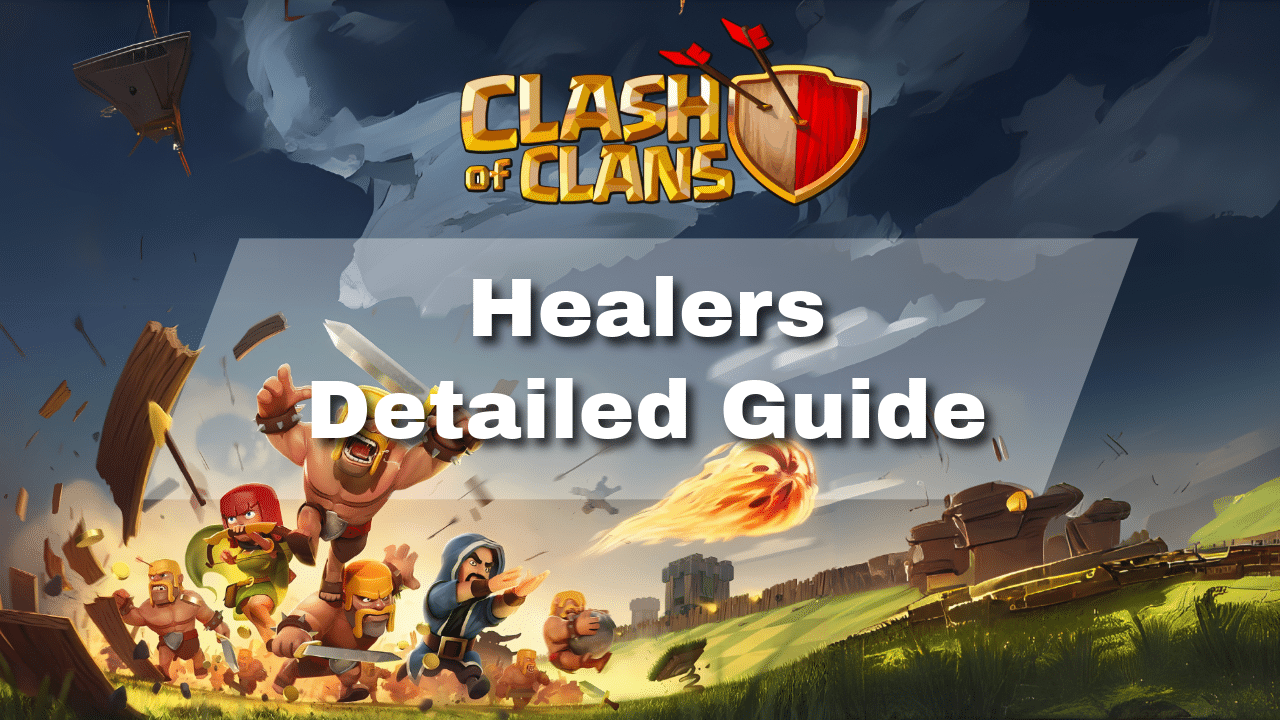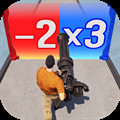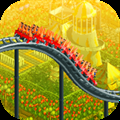Clash Of Clans Healers Detailed Guide - Theria Games

Introduction to Clash of Clans Healers Detailed Guide
The Healer in Clash of Clans is a flying support troop focused on healing ground units rather than dealing damage. Unlocked at Barracks level 8 and requiring Town Hall level 6, she is essential for keeping heroes and tanky units like Golems or P.E.K.K.As alive during battles. Healers prioritize healing the closest units, continuously restoring health until they are destroyed or out of range.
Healers excel in Hero Walk strategies, where they keep heroes alive long enough to destroy key defenses before other troops are deployed. They are also useful when paired with tank units to extend their lifespan in battle, ensuring that these troops can continue dealing with damage while being healed. However, Healers are vulnerable to air defenses, so protecting them from threats like Air Defenses and Seeking Air Mines is critical.
While effective in many strategies, the Healer’s potential can be limited by the number of Healers stacked on one target. After the fourth Healer, their effectiveness decreases, and using too many can waste healing resources. To maximize their impact, it’s important to use the right number of Healers and complement them with other troops and spells, such as Rage Spells, to enhance their healing capabilities.
LevelHealing per SecondHealing per PulseHPS on HeroesHitpointsResearch CostResearch TimeLaboratory Level Required13725.219500n/an/an/a24833.626700450,00012h53604233900900,0001d646646.2361,2002,700,0002d757250.4481,5004,200,0004d967250.4561,6007,000,0005d1177250.4621,7009,500,0008d1287652.2651,80014,800,0009d 12h1398056681,90016,800,00012d14108056742,00022,500,00015d15General Information
The Healer is an Elixir troop unlocked at Barracks level 8 and requiring Town Hall level 6. As a flying unit, she does not have attack capabilities, instead focusing on healing ground troops. She prioritizes the closest unit or Hero, healing them until they are destroyed or out of range. Healers do not heal air units, Siege Machines, or ground troops with a combined housing space of 2 or less. Heroes receive healing at a reduced rate compared to other units.
Healers are measured by healing per second (HPS), with a maximum of 7 Healers able to heal a single unit at once. The effectiveness of multiple Healers decreases after the fourth, making it important to use an optimal number for maximum efficiency. If a Healer has no target to heal, she will remain stationary, even while taking damage. In the Chinese version of the game, the Healer is referred to as “Angel.”
The Healer also has a unique synergy with spells, as she can be healed by a Healing Spell or Druid. When healing groups of troops, Healers prioritize larger groups, maximizing the total healing. At max level, a single Healer can provide up to 360 HPS, or 280 HPS when healing heroes, making them a crucial part of strategies involving sustained troop survivability.
Offensive Strategies
Air Defense Vulnerability:
Air Defense Vulnerability is one of the key weaknesses of Healers. As flying units, Healers are susceptible to being targeted and destroyed by Air Defenses such as Air Defenses, Air Sweepers, and Seeking Air Mines. These defenses specifically target air units, and Healers have relatively low hitpoints, making them easy targets for these high-damage attacks. If Healers are deployed without clearing or distracting Air Defenses first, they can quickly be eliminated before they have a chance to heal your ground troops or Heroes.
To protect Healers, it’s essential to either eliminate or distract Air Defenses before deploying them. This can be achieved through the use of indirect attackers—units that are not directly vulnerable to Air Defenses but can take them out. For instance, Bowlers are effective because they can attack from a distance, using their bouncy projectiles to eliminate Air Defenses without putting themselves at risk. Electro Dragons, with their chain lightning ability, can also snipe Air Defenses while targeting multiple buildings at once. These troops can clear out the Air Defenses, creating a safe path for your Healers.
Queen Walk:
Queen Walk is one of the most popular and effective strategies in Clash of Clans, where Healers are paired with the Archer Queen to support her as she clears key defenses and buildings in the early stages of an attack. The strategy revolves around the Archer Queen’s ability to deal high damage while staying safe from defensive units, thanks to the healing support provided by the Healers. The Queen Walk is commonly used in both war attacks and farming, as it creates a significant advantage by softening up the base and creating a clear funnel for the rest of your army to follow.
During a Queen Walk, Healers follow the Archer Queen and focus on keeping her health high while she deals with enemy defenses, such as Defensive Clan Castle troops, Splash Damage Defenses, and Buildings. The Archer Queen’s long-range ability allows her to target and destroy key structures from a distance, while the Healers continuously heal her, ensuring she can stay alive longer and take down high-value targets. This strategy is particularly useful for eliminating Air Defenses, Splash Damage, and Heroes, which can otherwise cause problems for other troops in the attack.
The key to a successful Queen Walk lies in funneling. The Archer Queen needs to be directed along a specific path, and Healers help sustain her health as she destroys structures along the way. Once the Queen has cleared a portion of the base, the remaining army can be deployed to move into the core of the base. The Healers are crucial in maintaining the Queen’s health during this process, allowing her to destroy defenses that might otherwise be problematic.
Rage Spells are often used to enhance the healing and damage output of the Queen, especially when she’s engaged with tough defenses or enemy Heroes. However, careful attention must be given to the air defenses in the area, as they can easily target and eliminate the Healers if they aren’t properly protected or distracted beforehand.
Warden Walk:
Warden Walk is a strategy where Healers are used to support the Grand Warden, similar to how they support the Archer Queen in a Queen Walk. The Grand Warden has the ability to outrange several defenses, which makes him a valuable asset in clearing out defenses from a distance without taking too much damage. This makes the Warden Walk a particularly useful tactic at higher Town Hall levels, where the Grand Warden’s long range and ability to target both ground and air units can help create significant openings in a base.
Healers are deployed alongside the Grand Warden to maintain his health as he clears out enemy defenses. Since the Grand Warden can survive longer without needing direct protection, Healers allow him to stay in action for extended periods, dealing with critical targets such as air defenses, splash damage units, and Clan Castle troops. The Grand Warden’s ability to deal with both air and ground targets, combined with the Healers keeping him at full health, makes this strategy powerful for systematically eliminating key defensive structures.
King Walk:
King Walk is a strategy in which Healers are deployed to support the Barbarian King as he pushes into the enemy base. This tactic is especially popular in Town Halls 7 and 8, where the Barbarian King is strong enough to tank damage but still requires additional healing to maintain his health during the attack. While the Barbarian King doesn’t have the same range or offensive power as the Archer Queen or Grand Warden, Healers help extend his effectiveness by allowing him to survive longer and take out critical defensive structures.
The King Walk works well in combination with a variety of other troops, as the Barbarian King can serve as the main tank while Healers keep him alive. Healers will focus on the Barbarian King and provide continuous healing, ensuring that he remains at full health even while taking damage from defenses. This allows the Barbarian King to deal significant damage to enemy structures, particularly defenses that are placed near the edge of the base.
This strategy is most effective when there is a clear path for the Barbarian King to follow, allowing him to clear buildings and defenses efficiently. Unlike the Queen Walk, which relies on high damage output, the King Walk is often used to take out defenses and clear a funnel for other troops to enter the base. However, the King Walk can be more challenging to execute at higher Town Halls since the Barbarian King doesn’t scale as effectively as other heroes like the Archer Queen or Grand Warden. Still, with proper support from Healers and strategic deployment, the King Walk can be a useful tactic in lower to mid-level Town Halls.
Champion Walk:
The Champion Walk is a strategy that involves using Healers to support the Royal Champion as she moves through the base. While the Royal Champion is a powerful hero with high damage output, this strategy is less popular than others like the Queen Walk or King Walk. One of the main reasons for this is the Royal Champion’s fast movement and her focus on defense-targeting, which makes it difficult for Healers to keep up with her. Since Healers are typically deployed behind slower heroes like the Archer Queen or Barbarian King, they struggle to maintain a position close enough to the Royal Champion to provide effective healing.
Additionally, the Royal Champion often moves quickly through the base, targeting defenses like the Scattershot, X-Bows, and Archer Towers. This fast-paced movement exposes the Healers to enemy defenses, which can quickly eliminate them if not managed properly. Healers are vulnerable to splash damage from defenses such as Mortars or multi-target Inferno Towers, and since the Royal Champion moves so rapidly, it can be hard to keep the Healers out of range of these attacks.
As a result, while the Champion Walk has its merits, such as pairing the Royal Champion’s high damage with healing support, it is not a common strategy due to the difficulty in keeping Healers safe and ensuring they can heal the Royal Champion effectively. This tactic may work in specific situations where the Royal Champion is moving through a relatively undefended section of the base, but in most cases, it is less reliable than other Hero Walk strategies.
Air Traps:
Air traps are an important consideration when using Healers in your attack, as they can be devastating if not accounted for. Healers, being flying units, are vulnerable to several types of air defenses and traps, such as Seeking Air Mines, Air Bombs, and even the potential splash damage from air-targeting defenses like the Inferno Tower and Air Defenses. These traps can quickly destroy Healers if they are not carefully avoided or cleared beforehand.
Seeking Air Mines are particularly dangerous to Healers. When a Healer enters the radius of a Seeking Air Mine, the mine locks onto her and deals significant damage, often eliminating her before she can perform any healing. This makes it crucial to clear these traps before deploying Healers into a base, especially if you are planning to use them in a Hero Walk or another strategy where they will be critical in keeping your troops alive.
Healer Stacking:
Healer stacking refers to the practice of deploying multiple Healers on a single target, such as a Hero, to keep them alive longer during an attack. While the concept might seem like it would result in a significant increase in healing, the effectiveness of stacking Healers has diminishing returns after a certain point. When you deploy more than four Healers on a single unit, the additional Healers will not significantly increase the healing output. After six Healers, the effect becomes drastically reduced, and adding more Healers becomes inefficient. Using too many Healers on one target is not advisable, as it wastes housing space and reduces the overall effectiveness of your attack.
Recommended Number of Healers:
Instead, it’s typically recommended to use around five Healers in a Hero Walk strategy. This number provides a good balance between ensuring the Hero remains at high HP while also accounting for potential losses due to factors like Seeking Air Mines. If a Healer is taken out by a trap or enemy defenses, the remaining Healers can continue to support the Hero, ensuring that they stay in the fight and continue to deal damage. By using five Healers, you maximize healing efficiency while preventing the overuse of housing space.
Rage Spells:
Rage Spells are an excellent addition to Hero Walk strategies when using Healers. Rage Spells can dramatically increase the healing per second (HPS) of Healers, allowing them to heal more effectively and at a faster rate. When a Rage Spell is placed over Healers and the Hero, the healing output is significantly amplified, making it much easier for the Hero to survive longer and take down more defenses. This synergy between Rage Spells and Healers is particularly potent in higher-level Hero Walk strategies, where keeping the Hero alive for as long as possible is critical to the success of the attack.
Defensive Strategies
Air Defense Protection:
Air Defense Protection is crucial when defending against enemy Healers. Since Healers are vulnerable to Air Defenses, placing these defenses in the middle of your base, away from the direct paths of defense-targeting troops, can help protect them. By positioning Air Defenses strategically, you ensure that they can target Healers while the enemy troops are distracted by other defenses, reducing the chance of Healers surviving long enough to support enemy units.
Clan Castle Troops:
In defensive Clan Castles, Healers are generally not recommended due to better alternatives available. While Healers can provide healing support, their lack of offensive capabilities and vulnerability to air traps or defenses makes them less effective than other troops, such as Wizards or Archers, which can deal more damage. Defensive Clan Castle troops should focus on providing offense or disruption rather than healing, which is better suited for offensive strategies.
Seeking Air Mines:
Seeking Air Mines are a significant threat to Healers, as they can quickly eliminate them if not properly managed. To mitigate the risk of these mines taking out your Healers, position them in places where ground attacks are expected. This will help ensure that Seeking Air Mines are activated by other troops before they reach the Healers. Using Balloons or other air-targeting troops can also help clear these mines, providing safer deployment of Healers during attacks.
Defensive Healers placed in the Clan Castle or within the base will not try to escape the poison radius when they are affected by Poison Spells. Additionally, they will not heal defensive Clan Castle troops or Heroes that are also affected by the Poison Spell. This makes Poison Spells an effective counter to Healers in a defensive setting, as they can nullify their healing capabilities while the Healers remain stationary and take damage from the poison.
Synergies
Heroes:
Healers synergize exceptionally well with Heroes, allowing them to push deep into enemy bases while dealing with defenses and creating opportunities for other troops. The combination of Heroes and Healers is the foundation of Hero Walk strategies. The Queen Walk is especially popular, as the Archer Queen has high damage output, and Healers can keep her alive longer as she destroys key defenses. The Grand Warden can also benefit from this synergy, with his long-range capabilities making him an excellent candidate for a Warden Walk, especially at higher Town Hall levels. Together, Heroes and Healers can clear paths through enemy defenses, allowing other units to follow up.
Wall Breakers:
Wall Breakers are crucial in Hero Walk strategies to enable the Hero and Healer combination to breach the base’s walls. Wall Breakers provide the necessary support to open up compartments, allowing the Hero to get deeper into the base, while Healers keep the Hero alive. This combination allows the Hero to destroy defenses in a targeted way while minimizing risks from defensive fire. Without Wall Breakers, the Hero and Healers could become stuck behind walls, limiting the attack’s effectiveness.
Balloons:
Balloons can be used effectively alongside Healers to clear out air traps like Seeking Air Mines. Balloons can trigger these mines before Healers are deployed, preventing them from being eliminated quickly. Since Healers are vulnerable to air traps, using Balloons to clear the way ensures they stay alive longer, allowing them to heal troops and Heroes more effectively. The coordination between Balloons and Healers helps provide better protection for critical units during an attack.
Rage Spells:
Rage Spells can significantly boost the healing capabilities of Healers, increasing their healing per second. This synergy works exceptionally well in Hero Walk strategies, as the Rage Spell speeds up the healing process and helps Heroes survive longer under heavy fire. The use of Rage Spells enhances the effectiveness of Healers, ensuring that the Heroes can push through the base and take out key defenses with minimal downtime.
Other Ground Troops:
Healers also support various ground troops, such as Miners, Hogs, and Yetis, in different attack strategies. Healers help them survive longer and deal more damage by healing these ground units during their push. Whether supporting a large group of troops or a mixed composition, Healers ensure the longevity of ground forces, allowing them to clear out defenses, buildings, and other threats that might otherwise eliminate them quickly. This versatility makes Healers valuable in many different army compositions.













